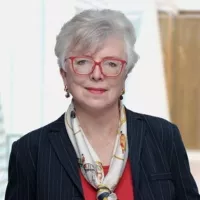- within Transport, Accounting and Audit and Immigration topic(s)
Today's Deep Dive is 1,257 words and an 8-minute read.
The climate fall of 2024 is ramping up: last week, an estimated 100,000 lawmakers, business leaders and activists gathered in New York to attend events discussing climate issues (making the event twice as big as it was the year before), and next week climate leaders gather in Baku, Azerbaijan for pre-COP meetings to set the agenda for the 29thmeeting of the Conference of Parties (COP) to the Paris Agreement in the first week of November. Despite heightened attention to climate meetings, many of the summit's agenda items remain mired in political gridlocks, and progress on key items like Article 6 carbon markets and the long-debated loss and damage fund remain uncertain. For businesses, COPs have long been the meeting to watch for a preview of coming climate regulations, efforts, and funding – but participants may have little to show for the week-long meeting this year.
On the Agenda: Article 6 Carbon Markets, Loss and Damage (Again), Methane and More
A top-line agenda item for COP29 will be operationalizing carbon markets originally established under Article 6 of the Paris Agreement. Carbon markets are a mechanism in which countries and companies can purchase, sell and trade units of carbon emissions avoided, reduced or removed, with the ultimate goal of entities reducing their net emissions and providing funding to projects that remove carbon from the atmosphere, enable reduced emissions, or protect natural carbon sinks. Carbon credits and so-called carbon offsets (the most popular term but not one used within the Paris Agreement framework) have become a flashpoint in the climate world in the recent months, as several leading bodies overseeing the certification and sale of carbon credits issued statements that many or most of the credits they oversee were not high-quality enough to be considered as emissions-reducing as they had been reported. The statements reflect years-long concerns that most carbon credits are not as effective as they purport to be, mostly because they promise to avoid units of carbon that already would have been avoided (such as via an already fully-funded renewable energy project or an area of peatland that was never in danger of being destroyed). Despite these concerns, carbon markets remain a crucial tool for raising funds for renewable projects, nature conservation and emerging carbon capture and storage technology, and a trusted, mutually agreed upon framework is crucial to fully make use of the concept. Without fairly quick deployment of a trustworthy trading platform, the carbon market could lose steam and credibility.
Fully funding the loss and damage fund, a long-sought element of climate mitigation, is another top agenda item for COP29. The fund is a proposed mechanism for developing nations to receive money from developed ones to recover and repair from extreme climate events and more gradual damages from climate change. The idea, as conceived of in the Paris Agreement, is that while developing nations are less able to prepare for or cope with extreme climate events or other climate-related damages, like degradation of agricultural lands, more developed nations have historically benefited from the economic development that has contributed to runaway climate change. Despite this fairly intuitive reasoning, the loss and damage fund has been dogged by complex issues since its inception: how much should countries contribute, and how should they – or the UN – decide? Given that funds will be limited, how much should claimants be allowed to withdraw? Who should decide, and how? Even who should be able to make claims is a contested topic: both Saudi Arabia and China, for example, are considered developing nations under UN criteria, but most oppose the idea that the 17thand 2ndlargest economies in the world, respectively, would receive climate mitigation funds. Last year at COP28, the loss and damage fund was formally established, and a fourteen-person board met for the first time in Abu Dhabi in May – but questions of who should donate, who should receive funds, and how it should be decided are far from solved.
Other areas of climate financing will also be a focus. Since the Paris Agreement, parties have been negotiating the New Collective Quantified Goal (NCQG), which is set to replace the previous 2009 $100 billion annual target of climate finance contributions from developed countries, which was never met. The NCQG seeks to fill persistent gaps in climate finance, especially for adaptation needs of developing countries, but negotiations in recent years have been “slow and unproductive.” Developed countries that would be constituting most of the funding continue to disagree on how to calculate suggested contributions, who should donate, and who should have access to the money. Recently, the Independent High-Level Expert Group on Climate Finance suggests that emerging markets and developing countries, excluding China, need to invest and spend close to $2.4 trillion a year by 2030 to meet climate and nature goals. That's four times what is currently invested or contributed by developing nations.
Another key goal of the Baku summit will be curbing methane emissions, especially from waste, the third most common man-made source of methane after the energy and agricultural sectors. Methane emissions – including in the agricultural sector – have taken center stage at successive COPs, as a relatively less controversial, and easier to achieve, method of reducing emissions than discussions of oil and gas. Methane is responsible for around 30% of the rise in global temperatures since the Industrial Revolution. At COP28 in the UAE, almost 200 countries promised to substantially cut methane emissions by 2030. Baku is calling on participants to sign onto the COP29 Declaration on Reducing Methane from Organic Waste, which will “streamline work towards 1.5-aligned waste sector commitments in national climate policy documents with quantified targets to reduce methane in waste and food systems.”
Other Baku action items as laid out by the Azerbaijani leadership include establishing FTZ-like “green energy zones,” increasing global energy storage, addressing barriers to the global hydrogen market, urban climate planning, climate action in tourism, and transparency in climate reporting.
Political Backdrop
As always, political considerations underlie what ostensibly is a technical summit to iron out rules and regulations to achieve already agreed-upon climate goals. Azerbaijan has called for a “COP truce” alongside this year's summit, asking all participants to lay down arms and focus on climate goals for the month of November. Not only is the call likely to go unheeded (high-profile conflicts in neighboring Eastern Europe and the Middle East are unlikely to pause), Azerbaijan has been accused of hypocrisy given that it reached a ceasefire with Armenia in the long-running conflict in the Nagorno-Karabakh just last year.
Businesses are reportedly also sending smaller delegations or simply skipping the event, wary of logistics in the relatively small city, concerns about Azerbaijan's viability as an international convener, and worries about implications from the US election, which will take place just days before the event is set to start. Concerns about a smaller COP in November is part of the reason alternate climate summits, like last week's Climate Week in New York City or the UN biodiversity conference known as COP16 in Colombia in October, have thrived. Many are already looking ahead to COP30 next year in Brazil, which is set to be a landmark summit where countries will set 2035 climate goals.
Despite the lack of attention, Baku's COP29 remains a crucial stop for some of those most affected by climate change. For some countries, it has already become an existential threat: Tuvalu recently asked fellow UN countries to support a resolution enshrining the country's perpetual statehood, even after the rising sea swallows the tiny, sea level string of atolls.
The content of this article is intended to provide a general guide to the subject matter. Specialist advice should be sought about your specific circumstances.





